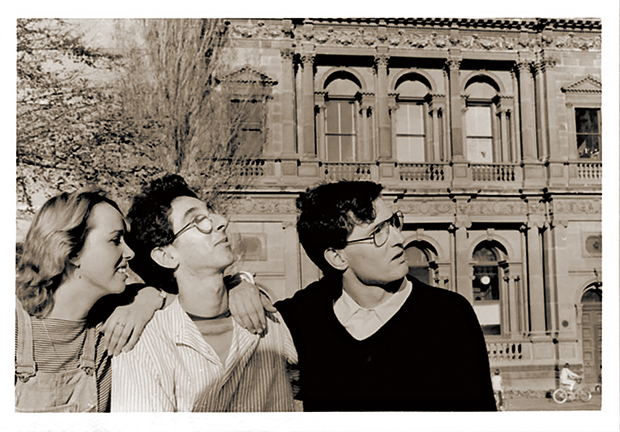Good stories, good times…and the odd angry shot
By Ray Gill
A former editor of Farrago, the University student newspaper, once offered a lament of her time on campus in the 1970s. “Right place. Wrong time. I started at Melbourne University in 1976 with a sneaking suspicion that I missed out on all the fun,” wrote Kate Legge in More Memories of Melbourne University (MUP).
Every student since the tumultuous 1960s has probably wondered what it might have been like to be at the centre of a cultural revolution. But each generation since has had its wars to oppose and its ideological battles to win, even if during my time in the 1980s the only on-campus demonstration I remember was a scuffle-free protest against a multinational winning a contract to run the Union caff.
The personal may have become political by then but what still endures is Farrago, where the editors and contributors like to believe they are shaping the world.
Farrago is 90 years old next year. It may be staffed by a few, lowly paid editors and a team of volunteers, but in its time it has outlasted dozens of other Melbourne newspapers that have crumbled under changing tastes and the continuing onslaught of the digital revolution.
It helps, of course, that Farrago can rely on funding from the Student Union (though this is never certain as it depends on the ideology of whichever federal government comes along), and it does have a captive university audience. Still, it’s surprising that in the era of sprawling social media, Farrago maintains its role reflecting the interests, issues and causes celébrès of University students.
Its first editor was Randal Heymanson in 1925. Among its editors since then have been dozens who made careers in journalism, literature or public life, including Bill Tipping, Amirah Gust (later Inglis), Geoffrey Blainey, Morag Fraser, Lindsay Tanner, Pete Steedman, Arnold Zable, Kate Legge, Kathy Bail, James Button, Nam Le and Christos Tsiolkas.
Its current team of four editors, elected as Student Union media officers, is Zoe Efron, Kevin Hawkins, Michelle See-Tho and Sean Watson. The issues covered in the first two editions for 2014 included smoking restrictions on campus, homophobia in Africa, female masturbation and the East-West Tunnel.
While the list doesn’t sound all that different from the kinds of stories Farrago has been covering since the 1970s, a lot has changed around Farrago if you haven’t been on campus for a while.
The editors are still elected in a week-long campaign of balloons, speeches and stunts. The four editors each receive $19,000 a year (once it was a one-person labour of love), and they publish about 4000 to 5000 copies of each edition. Fortnightly publication is long gone. Farrago Magazine, as it’s now known, is produced only eight times a year, but the online version is updated regularly and it has a Facebook and Twitter feed.
The chaos once characteristic of putting together a student paper from its office on the first floor of Student House has also given way to a more orderly schedule.
Hawkins says the four editors were elected late last year under the non-party-aligned “Independent Media” ticket. Now they are working 9 to 5, Monday to Friday and slipping off to lectures throughout the day. (Hawkins finished his degree last year but the others are all still students.)
When they asked for volunteers to write, contribute to and sub-edit the publication, they received 180 applications, compared with the 60 who volunteered last year.
Once upon a time the windowless bromide room was where Farrago editors repaired for Machiavellian student politics plots, drugs and sex, sometimes all at the same time.
“What’s a bromide?” asks Hawkins. “Oh, yeah we’ve heard about what things went on.” Bromides, Stanley knives and wax all disappeared sometime in the 1980s. From my ’80s perspective, I think Farrago changed radically in 1983 when Kathy Bail, John O’Hagan and Bruce Permezel were its editors. They were non-party-affiliated left who ripped the paper out of the dull hands of the campus political clubs who had used it as a plaything.
BOP (an acronym of their initials), were pop in the best sense. They used a sophisticated visual language and embraced the world beyond campus politics. Art, fashion and style were not verboten. Given it was the age of Madonna, ideological warfare often found expression in the battle between the ’70s feminists and the first wave of post-feminism. Semiotics was big. Bail, who went on to be editor of Rolling Stone and is now chief executive of UNSW Press, recalls that the “look’’ her team created was influenced by the Popism show at the National Gallery of Victoria in 1982.



